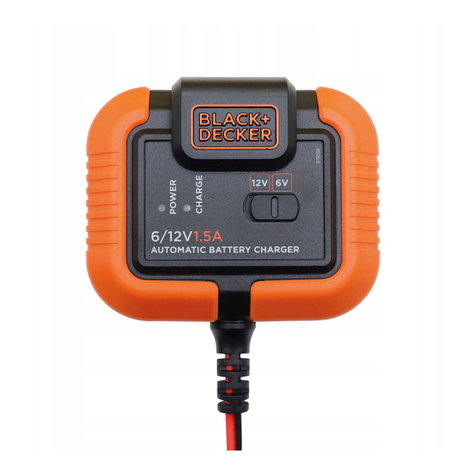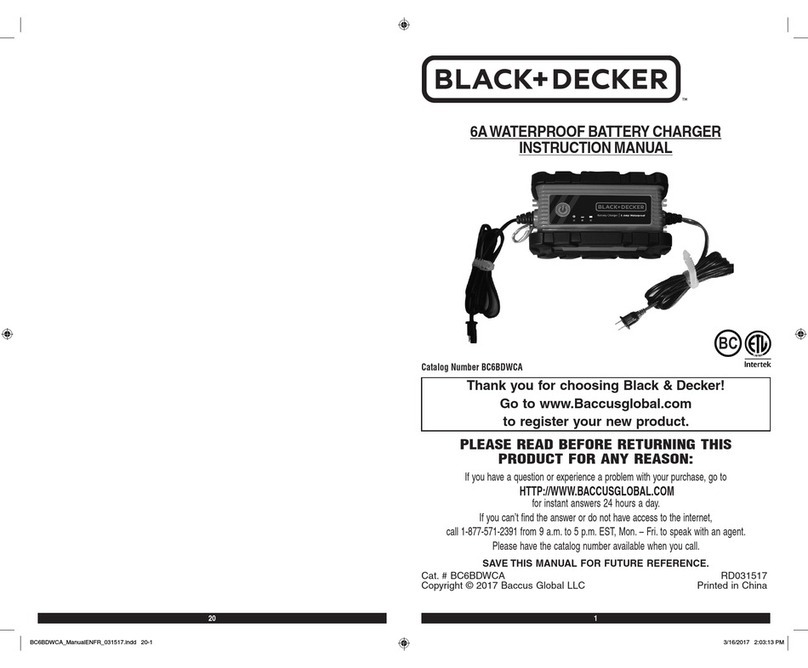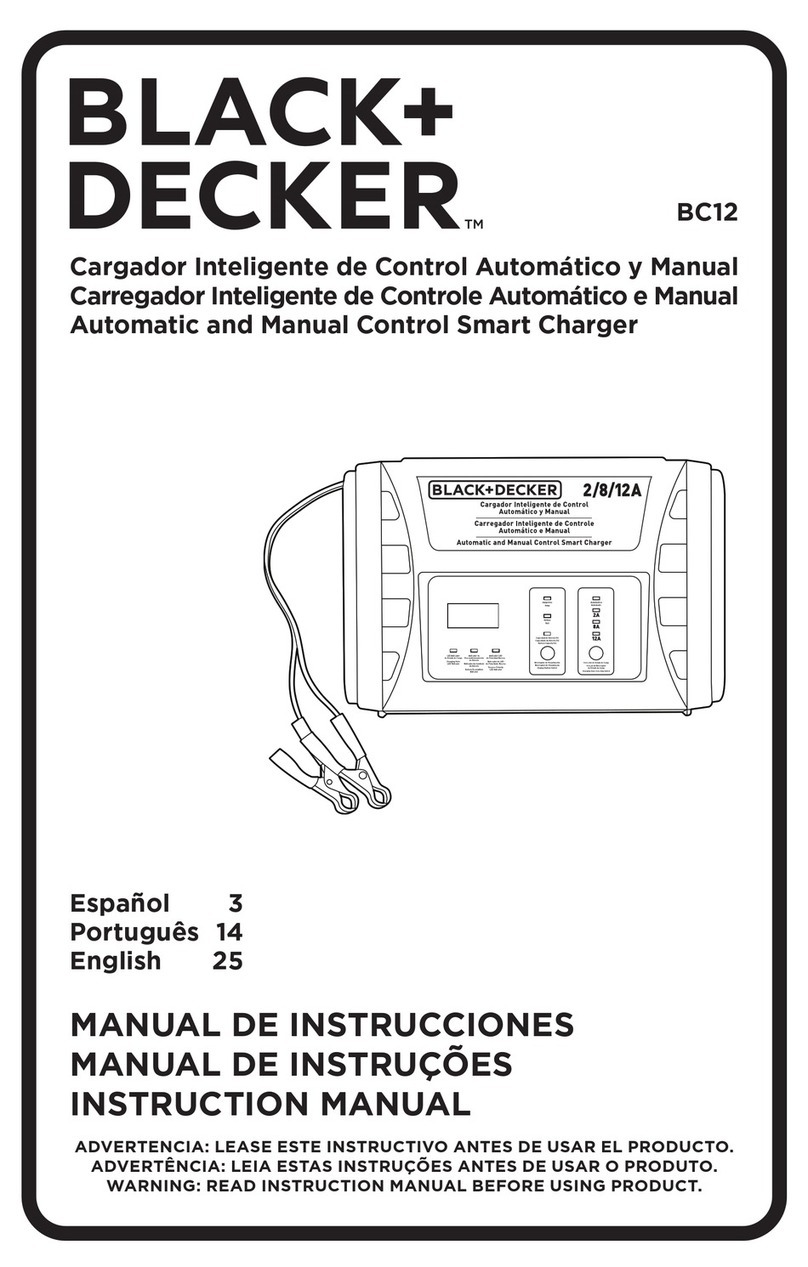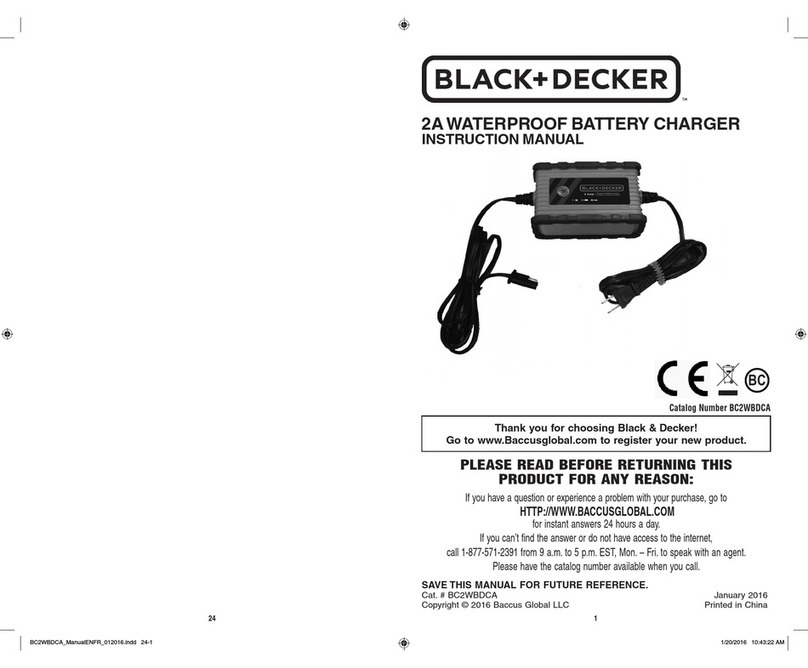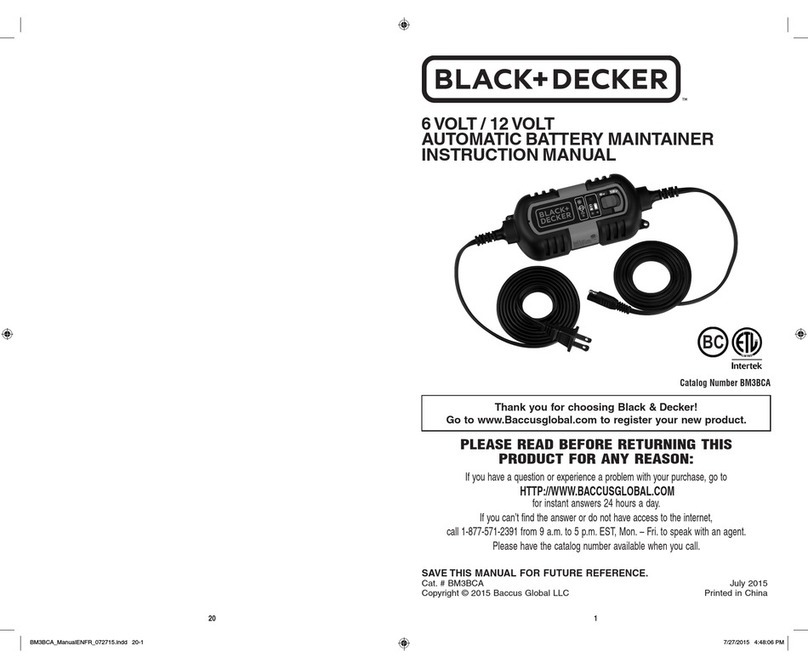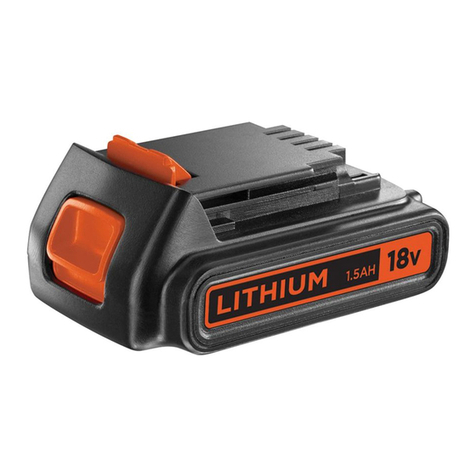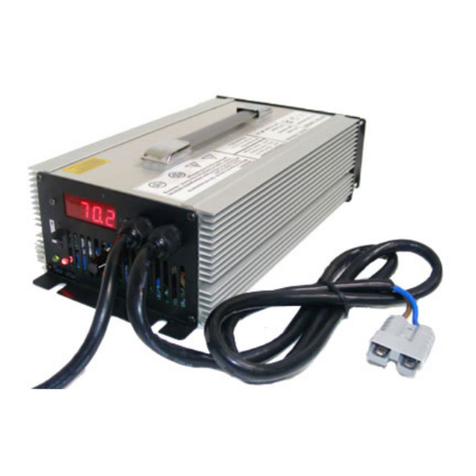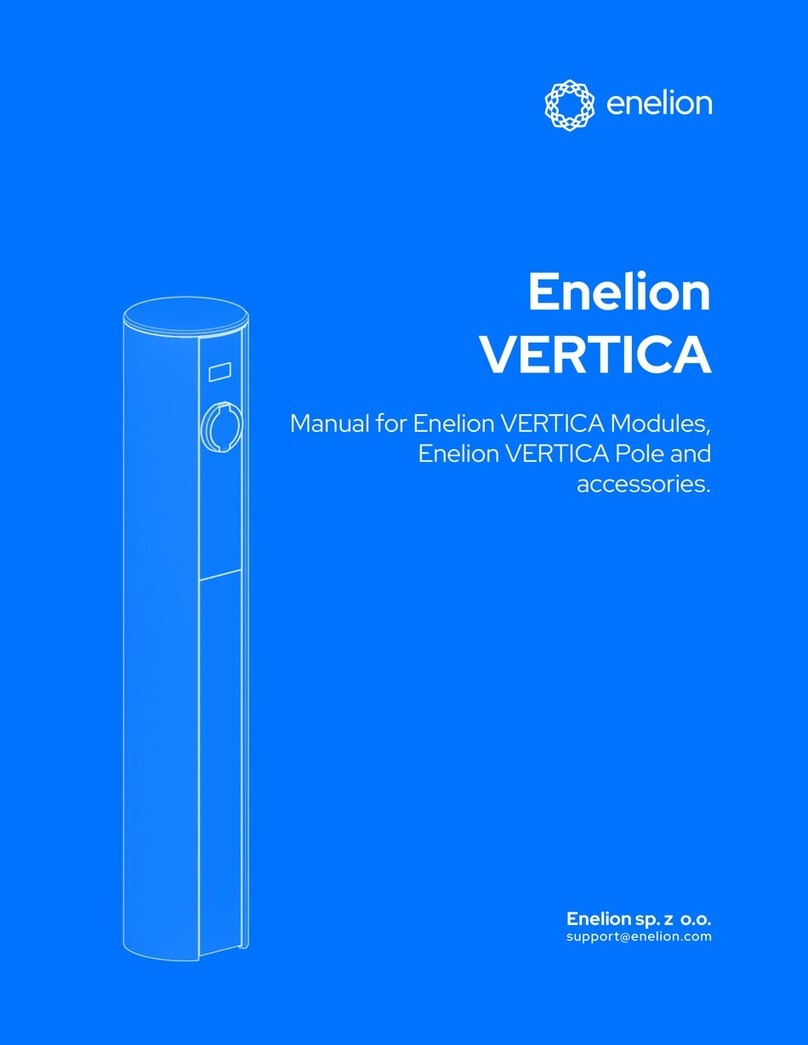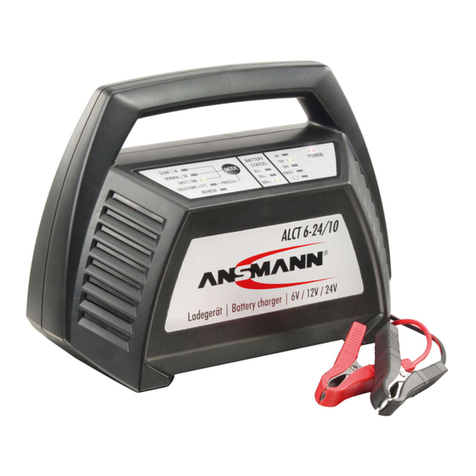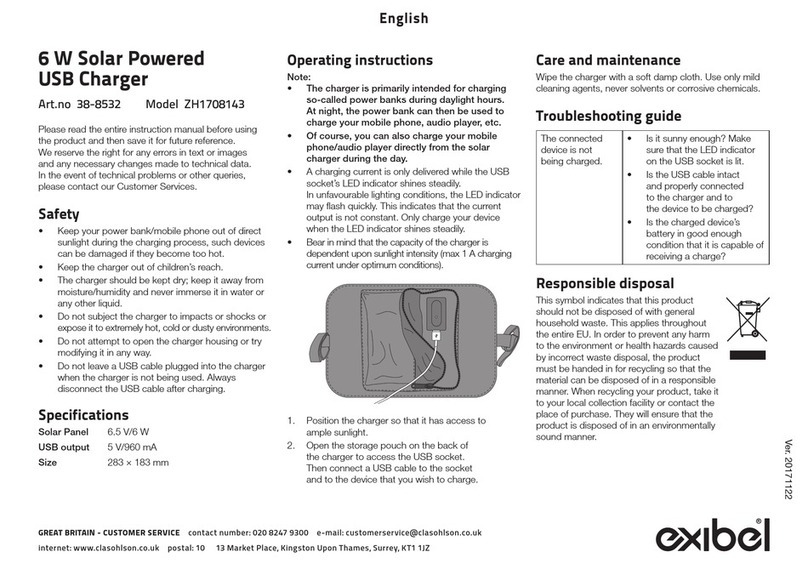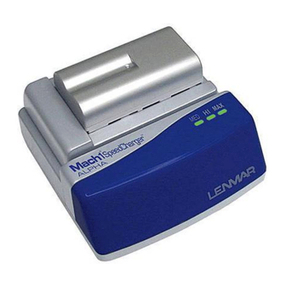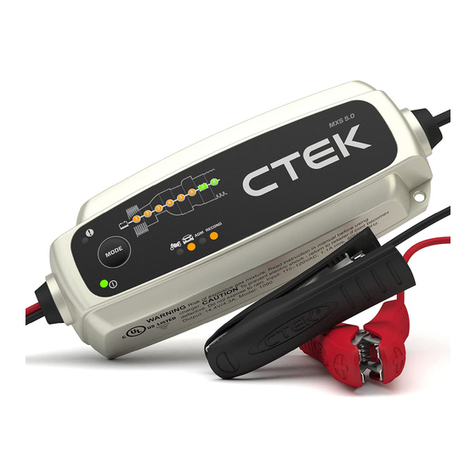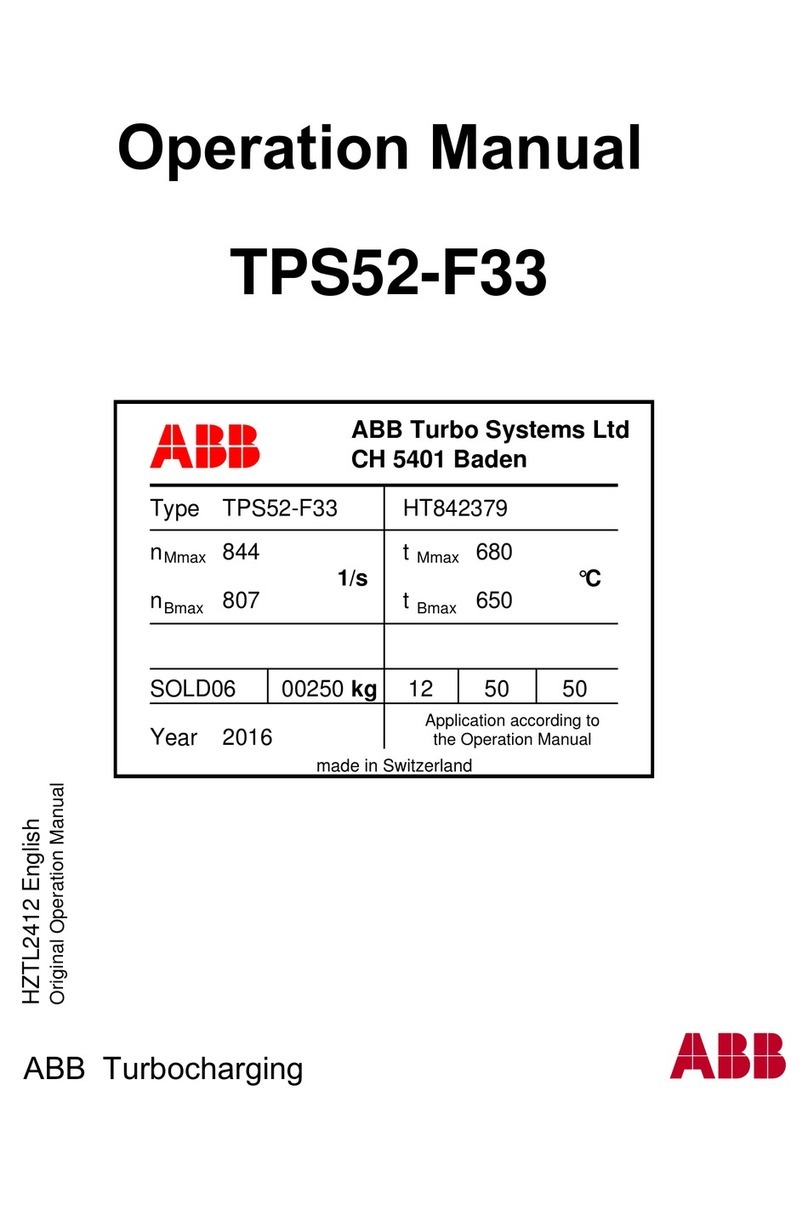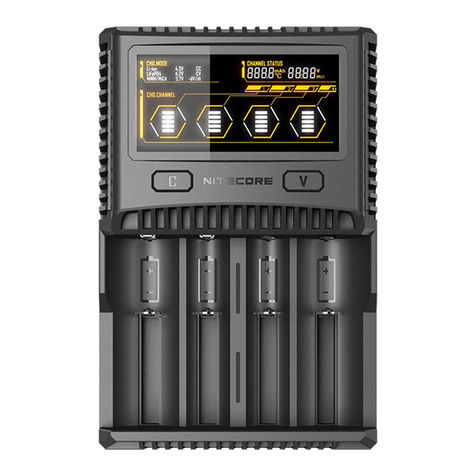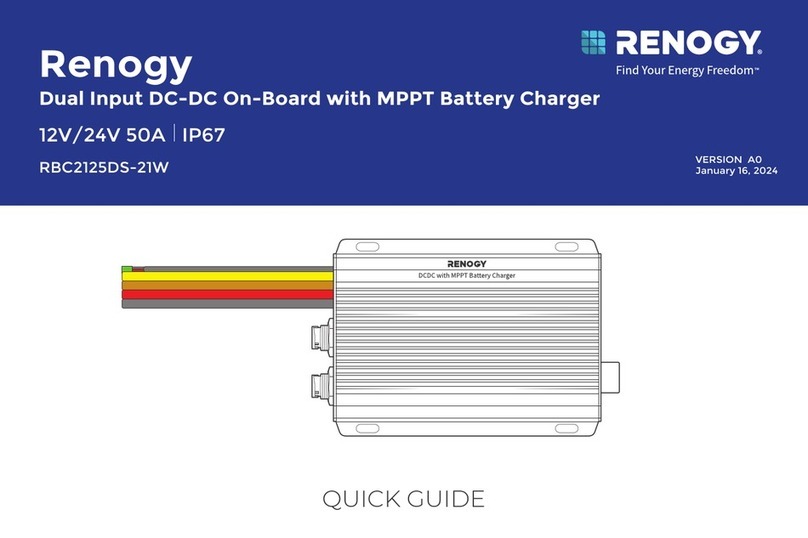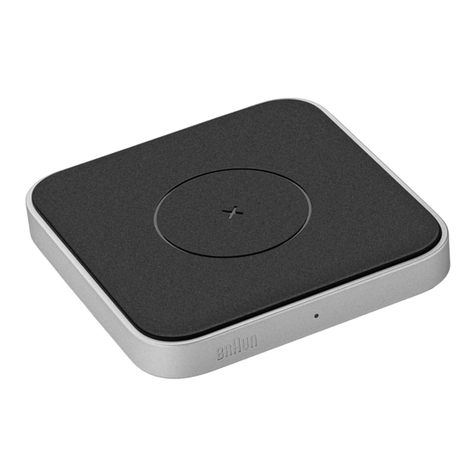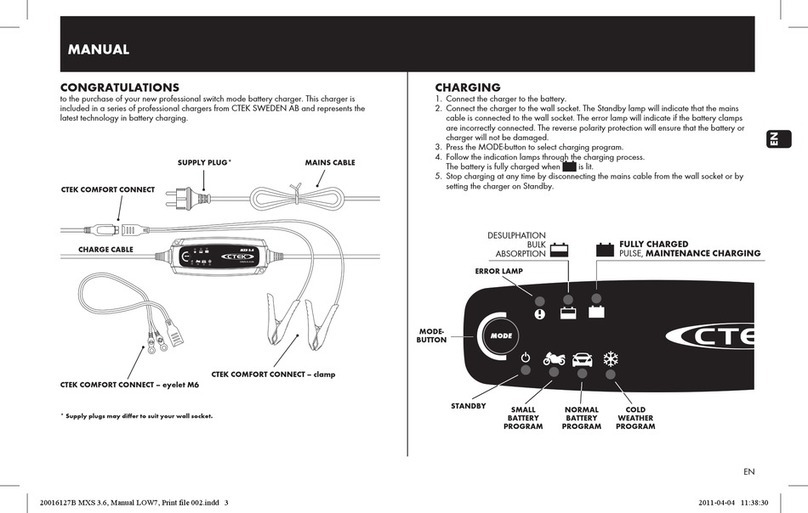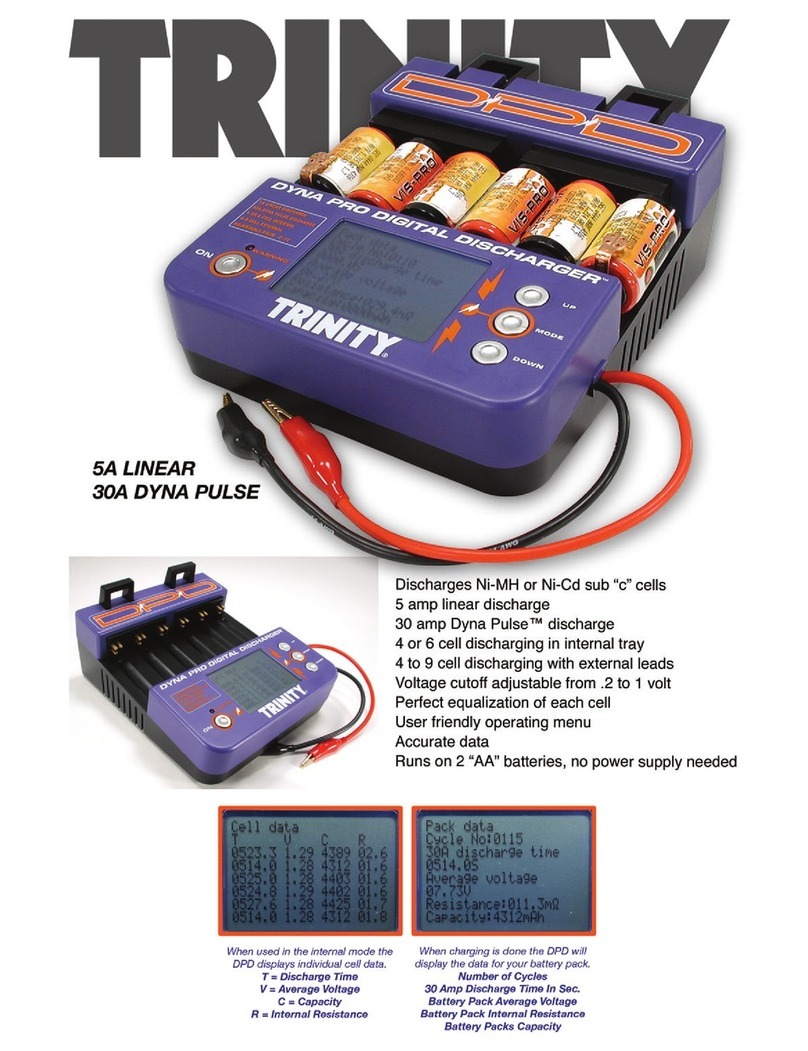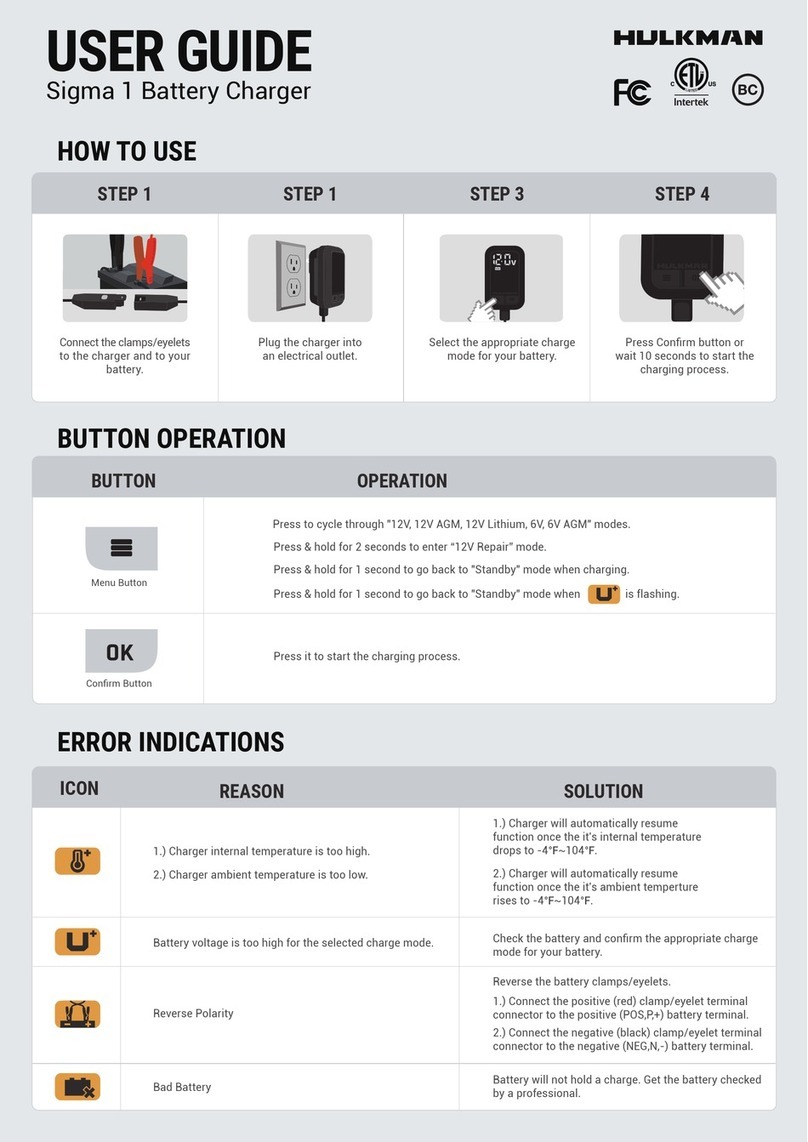4 5
SPECIFIC SAFETY INSTRUCTIONS FOR BATTERY CHARGERS
WARNING: BURST HAZARD:
Do not use the unit for charging dry-cell batteries that are commonly used
with home appliances. These batteries may burst and cause injury to persons and damage property. Use the unit
for charging/boosting a 12 volt battery only. It is not intended to supply power to a low-voltage electrical system
other than in a starter-motor application.
•
Use of accessories and attachments:
the use of any accessory or attachment not recommended by
manufacturer for use with this battery charger could be hazardous.
•
Stay alert.
Use common sense. Do not operate this equipment when you are tired or impaired.
•
Do not operate
the battery charger near flammable liquids or in gaseous or explosive atmospheres. Motors
may spark, and the sparks might ignite fumes.
WARNING: TO REDUCE THE RISK OF ELECTRIC SHOCK:
• Never immerse the battery charger in water or any other liquid, or use when wet.
WARNING: RISK OF EXPLOSIVE GASES:
• Working in the vicinity of a lead acid battery is dangerous. Batteries generate explosive gases during normal
battery operation. For this reason, it is of the utmost importance that each time before using the battery
charger you read this manual and follow instructions exactly.
• To reduce the risk of battery explosion, follow these instructions and those published by the battery
manufacturer and manufacturer of any equipment you intend to use in the vicinity of the battery. Review
cautionary markings on these products and on the engine.
• This equipment employs parts (switches, relays, etc.) that produce arcs or sparks. Therefore, if used in a
garage or enclosed area, the unit MUST be placed not less than 18 inches above the floor.
• THIS UNIT IS NOT FOR USE BY CHILDREN AND SHOULD ONLY BE OPERATED BY ADULTS.
WARNING: TO REDUCE THE RISK OF FIRE:
• Do not operate near flammable materials, fumes or gases.
• Do not expose to extreme heat or flames.
CAUTION: TO REDUCE THE RISK OF INJURY OR PROPERTY DAMAGE:
• NEVER ATTEMPT TO CHARGE A FROZEN BATTERY.
• Do not charge the battery while the engine is operating.
• Stay clear of fan blades, belts, pulleys, and other parts that can cause injury to persons.
• When working with lead acid batteries, always make sure immediate assistance is available in case of accident
or emergency.
• Always have protective eyewear when using this product: contact with battery acid may cause blindness and/or
severe burns. Be aware of first aid procedures in case of accidental contact with battery acid.
• Have plenty of fresh water and soap nearby in case battery acid contacts skin.
• If battery acid contacts skin or clothing, wash immediately with soap and water for at least 10 minutes and get
medical attention immediately.
• Never smoke or allow a spark or flame in vicinity of vehicle battery, engine or battery charger.
• Remove personal metal items such as rings, bracelets, necklaces and watches when working with a lead acid
battery. A lead acid battery can produce a short circuit current high enough to weld a ring, or similar metal
object, to skin causing a severe burn.
• Never allow battery acid to come in contact with this unit.
• Do not operate this unit in a closed area or restrict ventilation in any way.
• Always turn the battery charger off by unplugging it when not in use.
• DO NOT OPEN THE BATTERY CHARGER — there are no user-serviceable parts inside. Opening the battery
charger will void manufacturer’s warranty.
• Operate battery charger only as described in this Instruction Manual.
• Check battery charger and components periodically for wear and tear. Return to manufacturer for replacement
of worn or defective parts immediately.
PREPARING TO CHARGE
1. Be sure area around battery is well ventilated while battery is being charged.
2. Remove battery completely from boat/airplane or any confined area before charging.
3. If it is necessary to remove battery from a vehicle to charge, or to clean terminals, always remove the
grounded terminal from the battery first. Make sure all accessories in the vehicle are turned off, so as not to
cause an electrical arc.
4. Clean the battery terminals, taking care to avoid getting corrosive material in your eyes.
5. Add distilled water in each cell until battery acid reaches level specified by battery manufacturer. This helps
purge excessive gas from cells. Do not overfill. For a battery without cell caps (maintenance free), carefully
follow manufacturer’s charging instructions.
6. Study all battery manufacturer’s specific precautions, such as removing or not removing cell caps while
charging, and recommended rates of charge.
7. Determine the voltage of the battery to be charged by referring to the vehicle manual. This unit is for
charging a 12 volt battery only.
Charger Location
• Locate charger as far away from battery as cables permit.
• Never place charger directly above battery being charged; gases from battery will corrode and damage charger.
• Never allow battery acid to drip on charger when reading gravity or filling battery.
• Never operate charger in a closed-in area or restrict ventilation in any way.
• Marine batteries must be removed and charged on shore.
• Do not set a battery on top of charger.
Connection Precautions
• Connect and disconnect the battery clamps only after unplugging the AC cord from the electric outlet.
• Never allow clamps to touch each other.
• Attach clamps to battery and chassis as indicated in “Battery Installed in Vehicle” steps 5 and 6, or in “Battery
Outside of Vehicle” steps 2 to 5.
Follow these steps when the battery is installed in a vehicle
WARNING: A spark near the battery may cause an explosion. To reduce risk of a spark near the
battery:
1. Position AC and clamp cords to reduce risk of damage by hood, door, or moving engine part.
2. Stay clear of fan blades, belts, pulleys, and other parts that can cause injury to persons.
3. Check polarity of battery posts. POSITIVE (POS, P, +) battery post usually has larger diameter than
NEGATIVE (NEG, N, –) post.
4. Determine which post of battery is grounded (connected) to the chassis. If negative post is grounded to
chassis (as in most vehicles), see 5. If positive post is grounded to the chassis, see 6.
5. For negative-grounded vehicle, connect POSITIVE (RED) clamp from battery charger to POSITIVE (POS, P,
+) ungrounded post of battery. Connect NEGATIVE (BLACK) clamp to vehicle chassis or engine block away
from battery. Do not connect clip to carburetor, fuel lines, or sheet-metal body parts. Connect to heavy
gauge metal part of the frame or engine block.
6. For positive-grounded vehicle, connect NEGATIVE (BLACK) clamp from battery charger to NEGATIVE (NEG,
N, –) ungrounded post of battery. Connect POSITIVE (RED) clamp to vehicle chassis or engine block away
from battery. Do not connect clip to carburetor, fuel lines or sheet-metal body parts. Connect to a heavy
gauge metal part of the frame or engine block.
7. When disconnecting charger, disconnect AC cord, remove clamp from vehicle chassis, and then remove
clamp from battery terminal.
8. Do not charge the battery while the engine is operating.
9. See operating instructions for length of charge information.
BC15_25_40BD_ManualENSP_010515.indd 4-5 1/5/2015 5:44:56 PM
